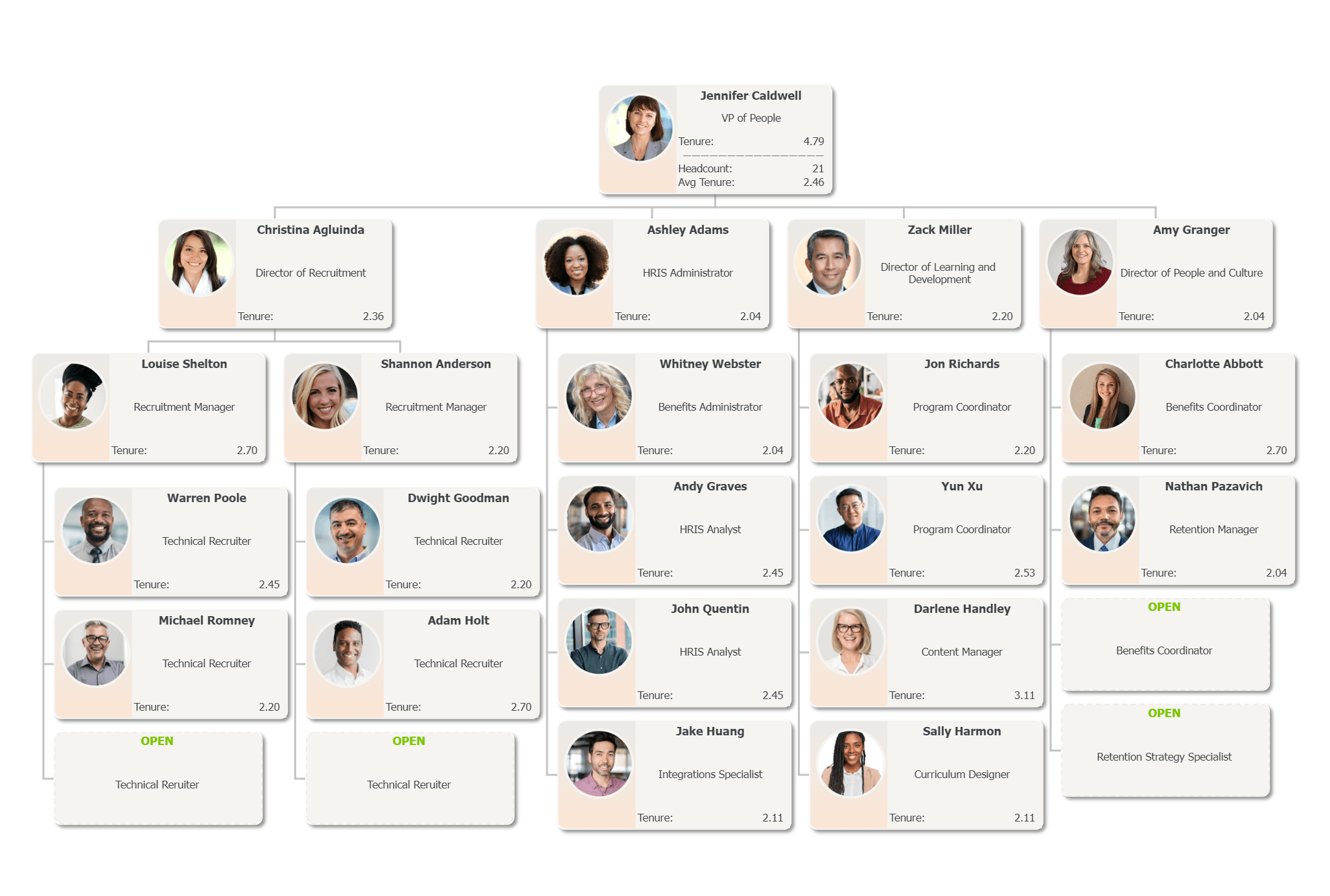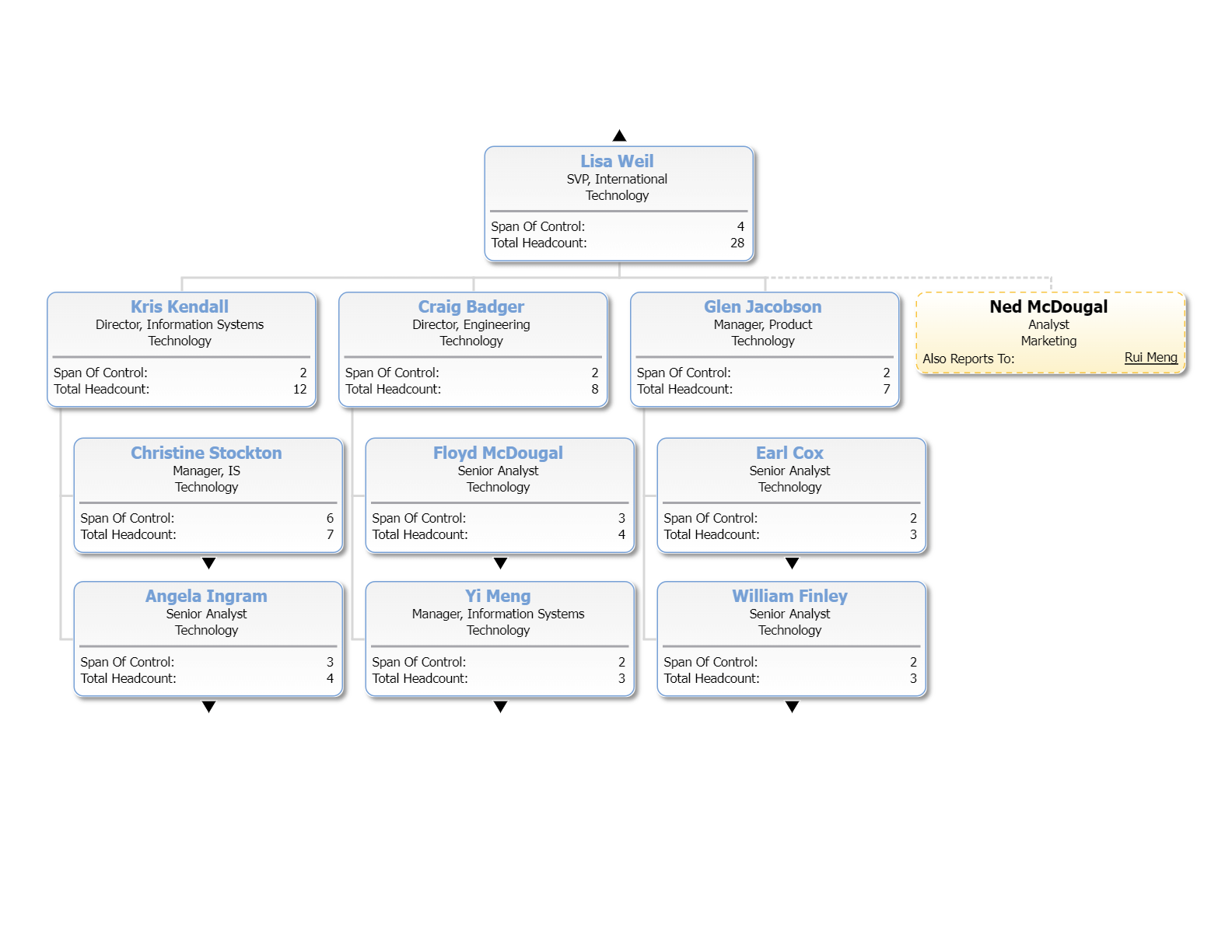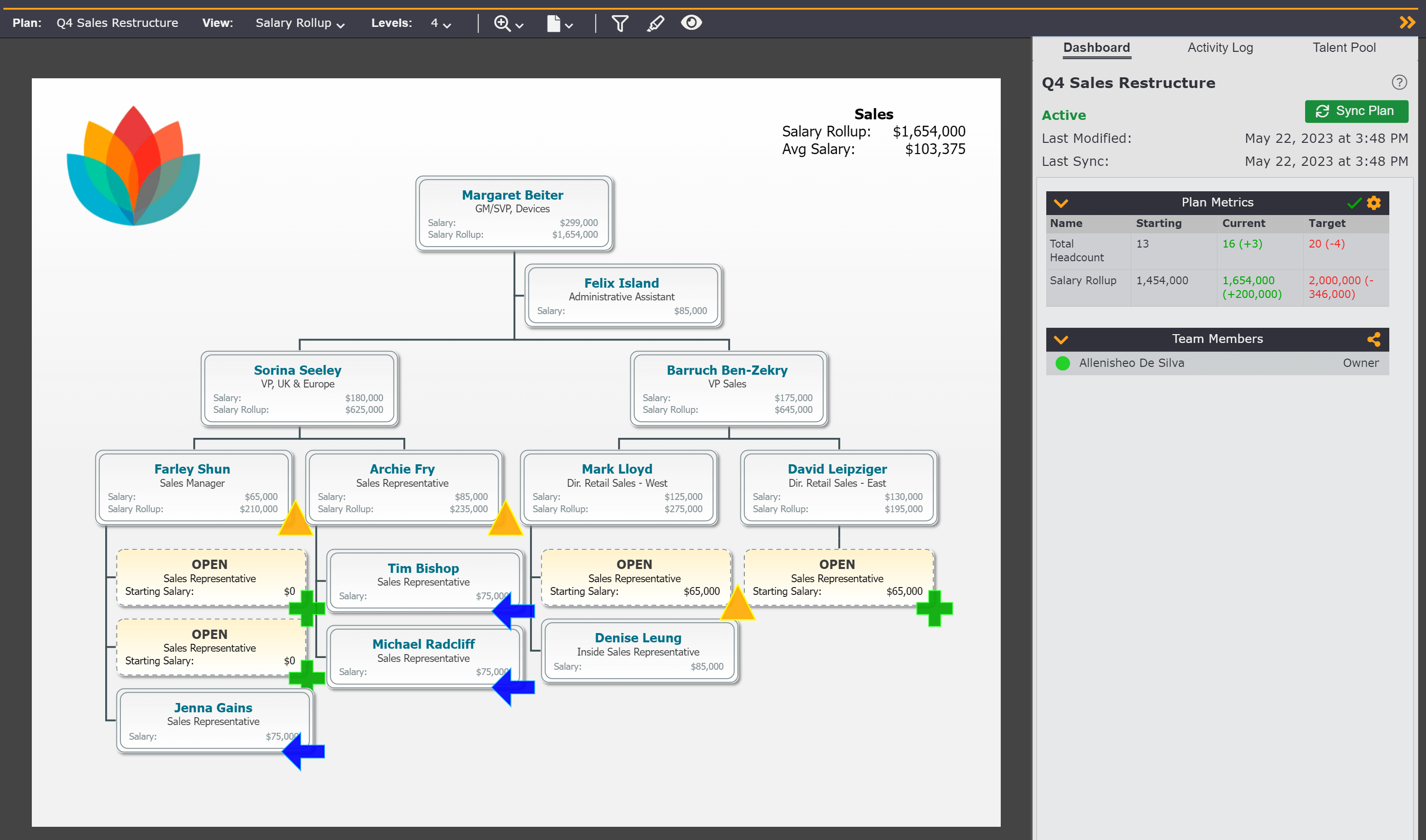May 5, 2021
1:34 AM
By OrgChart Team

In the fast-paced and complex world of organizational management, understanding structures and people dynamics is paramount. OrgChart, a trailblazer in organizational structures, provides solutions that cut through this complexity and deliver organizational clarity for HR professionals. Our aim is not just to meet the requirements of today but to empower our clients with the tools they need to design the organizations of tomorrow.
In the words of our CEO, Tom McCarty, “In the grand scheme of organizational development, it’s not just about mapping who reports to whom. It’s about understanding the different dimensions of your organization – from the current state to the dynamic changes and the future possibilities. At OrgChart, we are committed to providing a solution that captures this multi-dimensionality.”
With this in mind, we often work with clients who ask, “How do I chart our matrix organization the right way?” A matrix organization chart offers a distinctive perspective compared to a traditional org chart, providing a concentrated view of the people and functions associated with a particular project or objective. This article will delve into the differences between the two and showcase the power of our unique solution that has profoundly impacted our clients.
Welcome to the OrgChart experience. Let’s explore the journey of creating a matrix organization chart together.
“How can I chart our matrix organization?” is a frequently asked question, but it requires a baseline understanding of this type of organizational structure. Let’s examine how a matrix org chart differs from a traditional org chart before we introduce the how‑tos.
We’ve all seen the basic org chart below. This standard org structure is a formal or payroll hierarchy, providing answers to questions like who reports to whom and some primary data such as name and title. This is a helpful view when you need to know who approves a person’s timesheet or is responsible for an employee review.

Dotted-line org charts, an integral part of matrix organization charts, visually represent secondary or “dotted-line” reporting relationships within an organization. Unlike traditional organizational charts that strictly depict the primary hierarchical structure, a dotted-line org chart introduces an additional layer of complexity by illustrating the functional or project-based relationships. These charts can be handy in organizations where employees report to multiple supervisors, such as in project-based roles or cross-functional teams.
With OrgChart, you can easily incorporate dotted lines into your charts, clearly depicting these additional relationships and providing a comprehensive view of your organization’s dynamics. Remember, understanding your organization extends beyond knowing who reports to whom in a primary hierarchy; it’s about visualizing the entire operational matrix.
Taking this view further, we can show dotted-line relationships, indicating where employees report to another manager (e.g., a project manager) for a temporary assignment. This view provides both the formal structure of the organization and a perspective on who is working for an auxiliary manager, helping visualize the people involved in a specific project in the context of everyone else in the company.
Creating a matrix organization chart is valuable because it allows a focused view of the people and functions related to a specific project.
OrgChart addresses the challenge of visually representing a matrix organization in sub-charts. By duplicating the box in each sub-chart and including a link to allow users to jump back and forth, it’s possible to see exactly where an employee reporting to two managers sits in both organization groups.

Creating a matrix organizational chart can seem daunting, but with OrgChart, the process becomes straightforward and manageable. Here are the steps to help you make your matrix organizational chart with ease:
Before you start, ensure that you have the data you desire to have in your org chart available somewhere. This includes employee names, job titles, managers, and department details. The data should also contain any secondary reporting relationships or project-specific assignments.
Using OrgChart, import your data. Our platform can easily integrate with popular HRIS, simplifying this process. If your core HR system does not allow you to assign an employee to more than one manager, you can upload an Excel file with the necessary information.
Enable Auxiliary Reporting in the Chart Settings: Mapping panel, and then refresh. OrgChart will automatically generate a second employee box for those who report to more than one manager.
You can use the View Manager to format how these boxes look, and make them distinct from other records, if desired.
Once you’ve formatted how you want your chart to look, you can use OrgChart’s filtering and highlighting tools to filter by project or functional area, seeing auxiliary employees appear under both their primary and secondary supervisors. Finally, share the interactive org chart within your organization, or collaborate with key stakeholders to add key data metrics and generate “what-if” scenarios.
With OrgChart, workforce planning becomes a breeze. It can help you model future organizational changes and understand their impact. Collaborate in real-time with key stakeholders to create actionable future workforce plans and prepare for significant people-related changes or forecast organizational structures post-merger.

OrgChart is the solution for creating visually informative charts at a glance that are easily shareable as an interactive PDF or on the company intranet. This can be automatically generated in minutes and refreshed as the organization evolves and people change.
OrgChart is not just an organizational charting tool; it’s a powerful visualization instrument for HR professionals looking to track key metrics, generate “what-if” scenarios., and trial future organizational states.
Now that you’ve seen the power and possibilities of using OrgChart to create and manage your Matrix Organization Chart, why not take the next step? Unleash the full potential of your org chart with OrgChart. Combine all your people data in one place, visualize the current state, and model your future organization. It’s efficient, effective and provides the insight you need to facilitate workforce planning and realize your organization’s future vision.
Remember, we’re here to make things easier for you. If you’re curious about how OrgChart can revolutionize your workforce planning and give a new dimension to your organizational chart, request a quote today.
Tags: